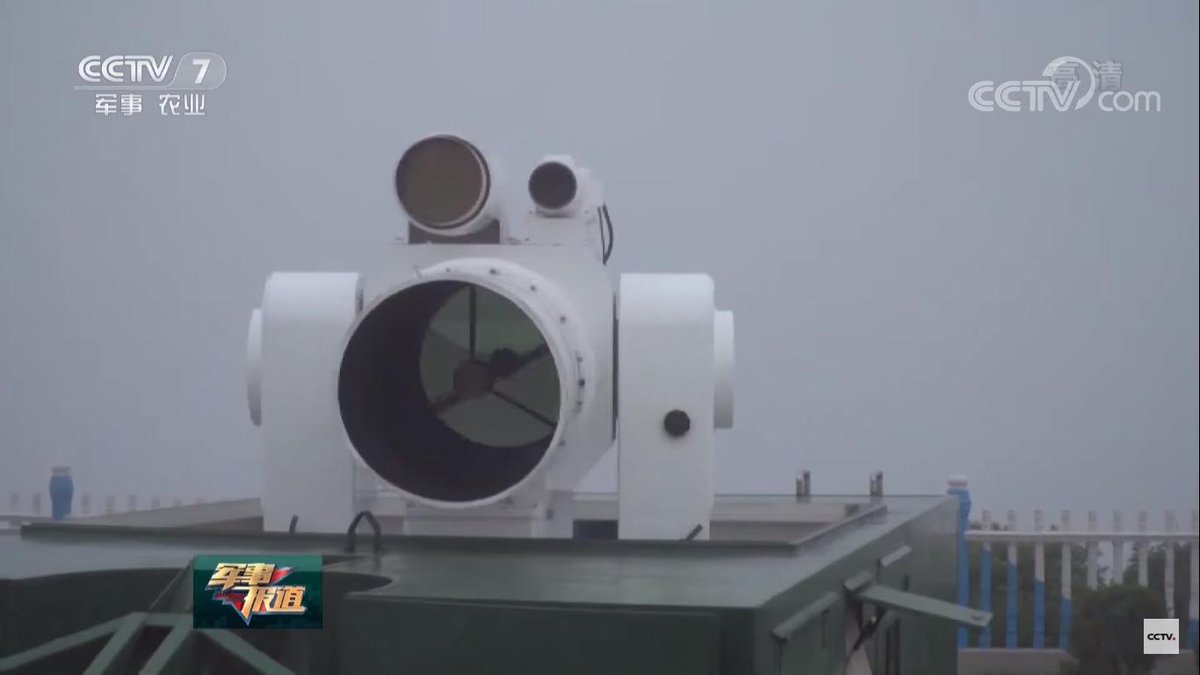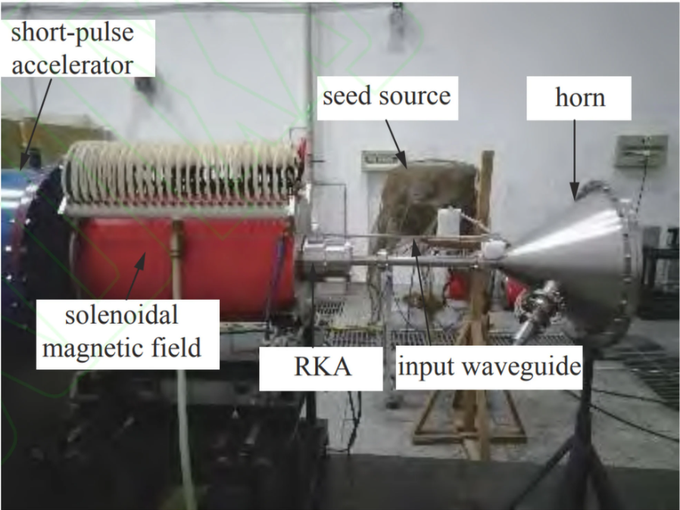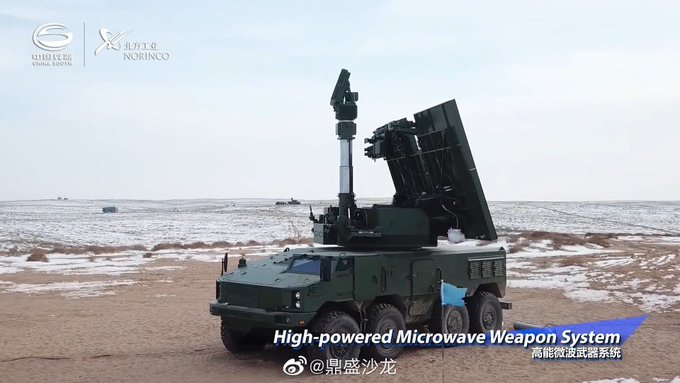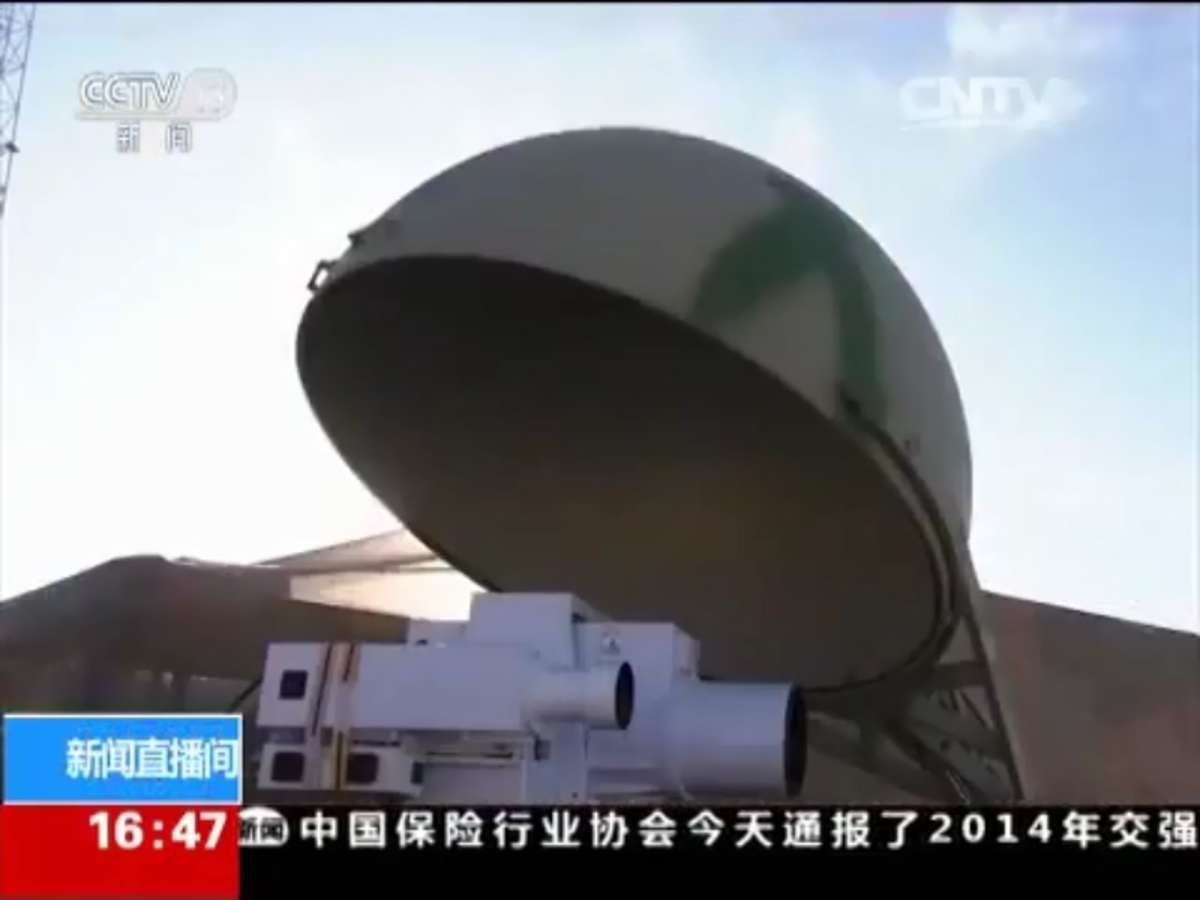China’s quest for Directed Energy Weapons (DEWs) has long been a cause of concern for its adversaries in the West.
A research team in southwestern China claims to have developed a strong microwave device with ultra-high output in a frequency that is increasingly utilized by industry and the military, the South China Morning Post reported.
After Xi Jinping’s Order, PLA Officials Mull ‘Military Law’ To Safeguard China’s BRI Projects — Reports
According to the researchers in Mianyang, Sichuan province, the system could generate a short pulse in the Ka microwave band with a power of 5 megawatts, a magnitude bigger than publicly known results.
The team has claimed that the technique might be used in a variety of fields, including satellite communications, radar, nuclear fusion, and medical research.
“There is an enormous interest in high-power microwave sources in the Ka band,” said Li Shifeng, a lead scientist for the research project with the China Academy of Engineering Physics in a paper published in the domestic peer-reviewed journal ‘High Power Laser and Particle Beams last week.

The Ka (K-above) band is a high-frequency section of the microwave spectrum between 26.5 and 40 gigahertz.
SpaceX’s Starlink satellites, for instance, use part of the Ka spectrum to interact with ground stations. The US Army also aims to equip its newest combat drones to use the Ka-band by 2027.

The US Army had announced in 2019 that it aims to upgrade its fleet of General Atomics MQ-1C Gray Eagle unmanned aerial vehicles (UAVs) with Ka-band satellite communications capability.
Ka-band systems are built with smaller, steerable beams for high capacity density, which adds some enhanced jam resistance for platforms while supporting significant uplink data rates for programs such as military Intelligence, Surveillance, and Reconnaissance (ISR) and other data-rich applications in space.
Alternatives to Ka-band simply are unable to deliver the seamless and ubiquitous coverage that is essential for military use. Only through a patchwork of satellites and systems, other system users confront inconsistent power throughout the footprint that results in an unpredictable and fluctuating quality of service between the center and outer margins of the beam.

Space testing has demonstrated Ka-band systems can transport high-speed data without degradation, even in harsh weather circumstances. This is probably the reason why China itself developed a technology only recently that would safeguard its own satellites from a microwave attack.
Last month, Chinese scientists claimed to have discovered a new technology that could shield satellites against high-powered microwave weapons. The researchers from the China Academy of Space System stated the technology had passed ground testing and that parts of it were currently in use by some vital space assets.
Microwave Innovation
A microwave radiation source operating in or near the frequency range can jam communications or potentially harm sensitive hardware of devices using the band if it has a high enough power level, according to the SCMP report.
For years, the Ka band’s most powerful devices have been confined to a few megawatts. According to Li and colleagues, increasing power often resulted in a dramatic drop in efficiency and stability. With a cone-shaped muzzle, the Sichuan team’s gadget blasts high-energy electrons via a tube and converts them to high-power microwaves.

US naval researchers had presented the device, known as a relativistic klystron amplifier (RKA), in the late 1980s. Previous prototypes with the design had only been able to produce a few hundred kilowatts of power in the Ka-band.
According to Li’s team, they altered the arrangement of key critical components so that each physical process in the equipment could be independently measured and fine-tuned.
In a test, the new version produced 501 megawatts of power. According to their report, computer modeling revealed that there is still an opportunity for development.
The device has the potential to become a high-power microwave weapon, according to a Beijing-based space scientist working on high-speed satellite communication technologies.

The machine’s microwaves could be a billion times more powerful than those utilized by most communication equipment. “This is overwhelming just to think about,” said the researcher, who requested anonymity.
This development becomes significant after the controversy surrounding China’s alleged use of microwave weapons against Indian soldiers during the conflict in 2020.
Jin Canrong, the Deputy Dean of the Renmin University of China’s School of International Relations, claimed on a TV program in 2020, that PLA soldiers had used directed energy weapons against Indian soldiers in eastern Ladakh, as previously reported by the EurAsian Times.
When Indian soldiers were in control of the top peaks in Ladakh and could not be thwarted using conventional weaponry, Jin stated the Chinese military “made innovative use of high-power microwave weapons.”
Important story here that hones in on microwaves as the most likely cause of the concussive-like illnesses suffered by US diplomats in Cuba and China. It's doubtful the Cubans have such technology, but one country that likely does is Russia. https://t.co/rRE34J4vKt
— Michael Carpenter (@mikercarpenter) September 5, 2018
Furthermore, the US has already declared their concerns about microwaves that they speculate was the cause behind their embassy staff being plagued with the “Havana syndrome”. China’s breakthroughs with microwave technology and its potential use in building of weapons could fluster the United States.

Cause Of Concern?
For the time being, according to a physicist studying high-power microwave technology in the United States, the Chinese prototype is unlikely to pose a threat to Starlink satellites.
“The distance from a ground-based system to the satellites is huge, so this would not be effective,” said a researcher who had been following Li’s team’s study but did not want to be identified.
According to recent research by Chinese satellite engineers, to effectively jam or damage modern satellites protected by new technologies, a ground station would need more than a gigawatt of power.
SpaceX reprioritized to cyber defense & overcoming signal jamming.
Will cause slight delays in Starship & Starlink V2.
— Elon Musk (@elonmusk) March 5, 2022
Earlier this month, SpaceX CEO Elon Musk stated that Starlink’s internet service to Ukraine had been blocked for several hours.
Following Russia’s invasion of Ukraine, Starlink supplied a huge number of user terminals to the country. These terminals used a lower frequency in the Ku band to provide satellite-based internet service.
A software upgrade, according to Musk, was used to get around the jamming. In a tweet on March 5, he said, “I’m curious to see what’s next.”
- Contact the author at sakshi.tiwari9555@gmail.com
- Follow EurAsian Times on Google News




